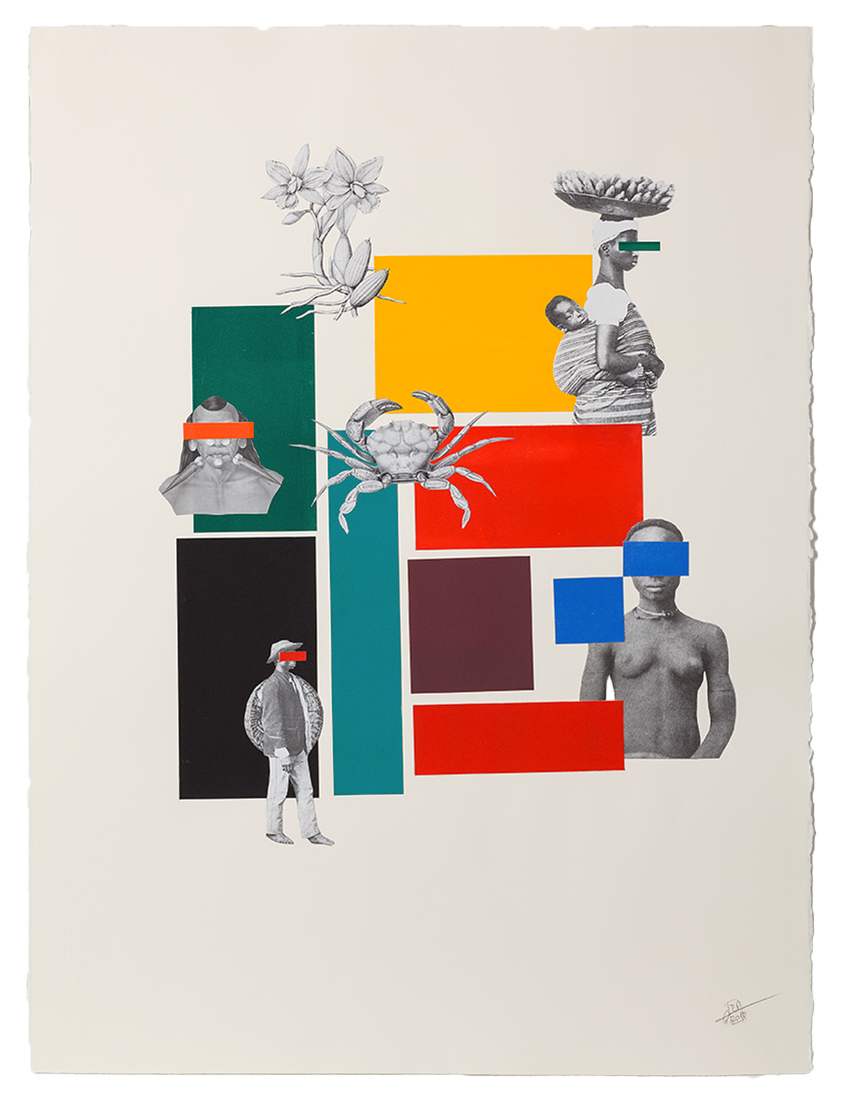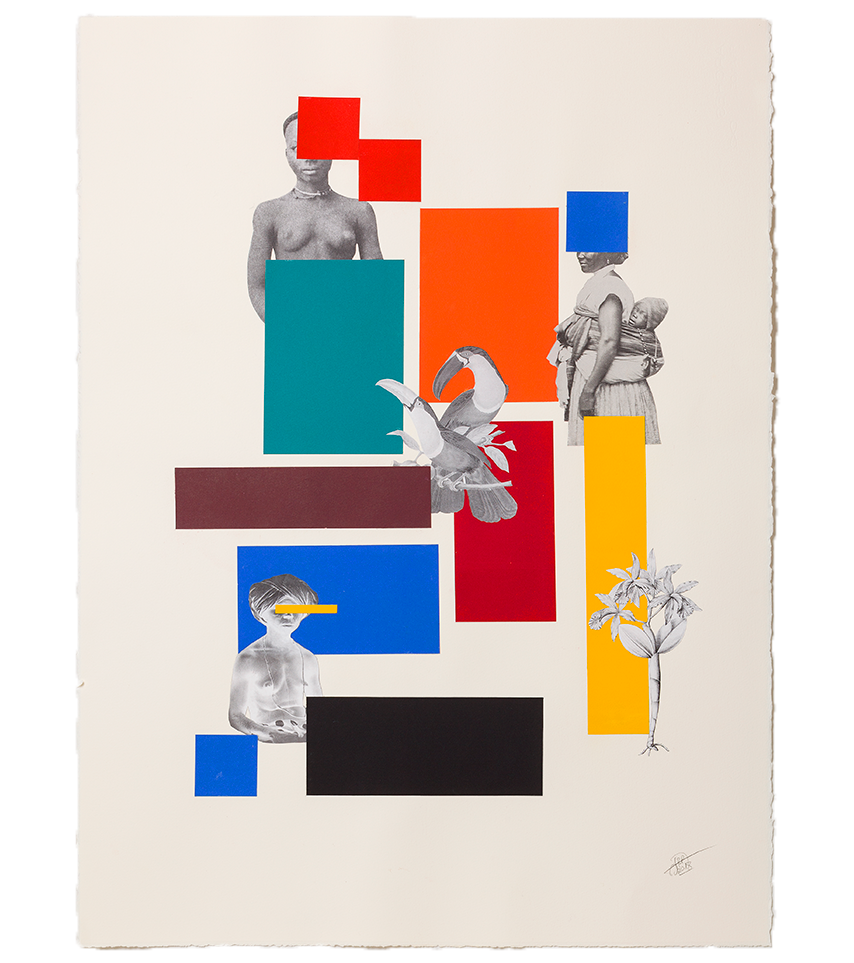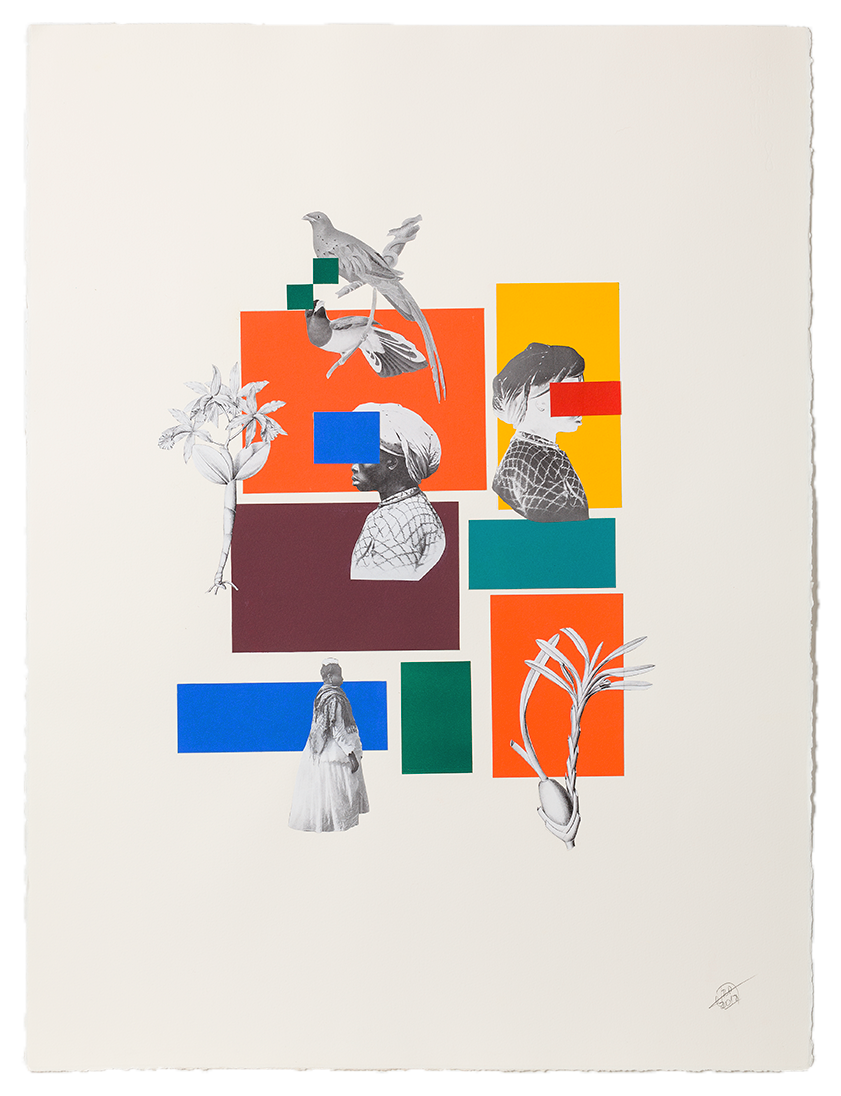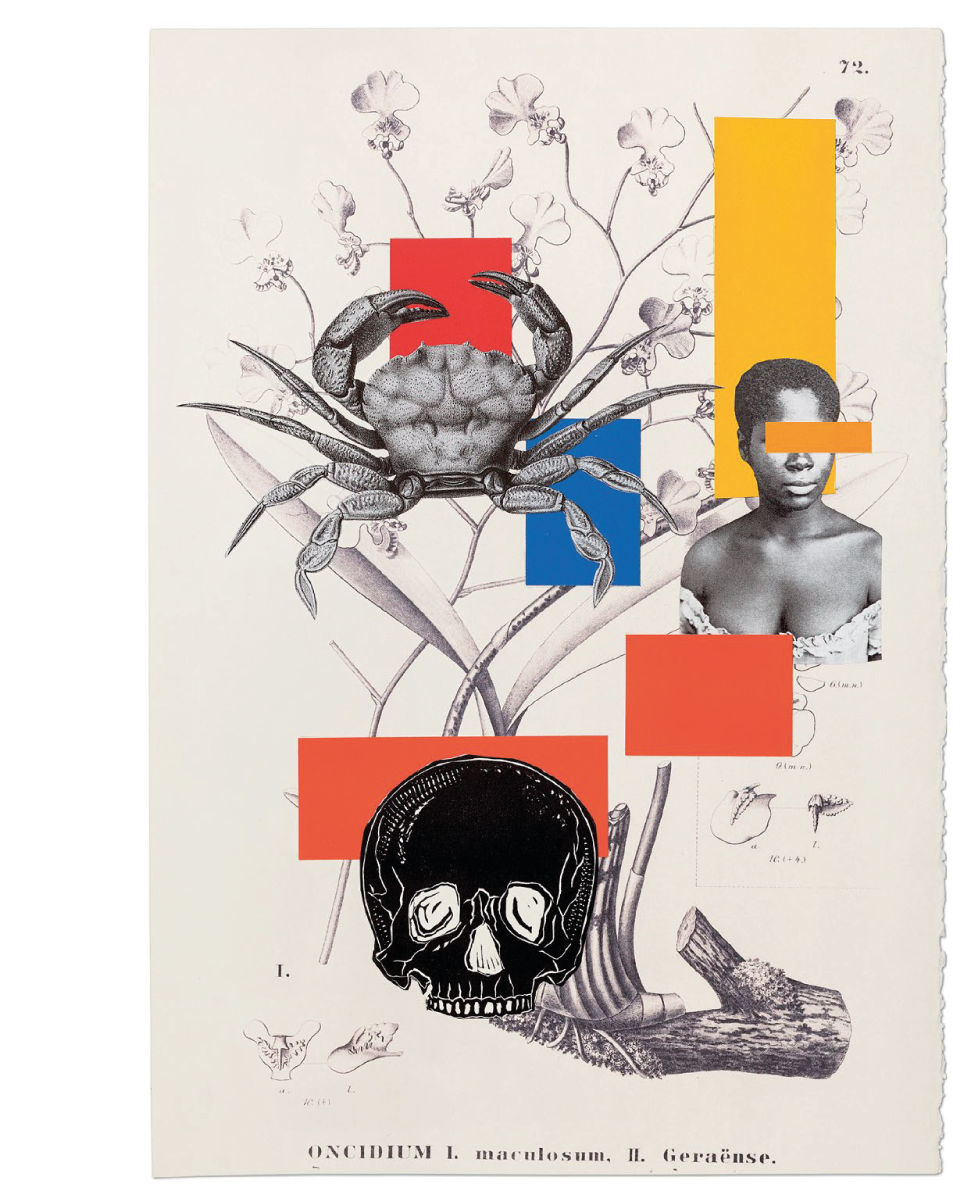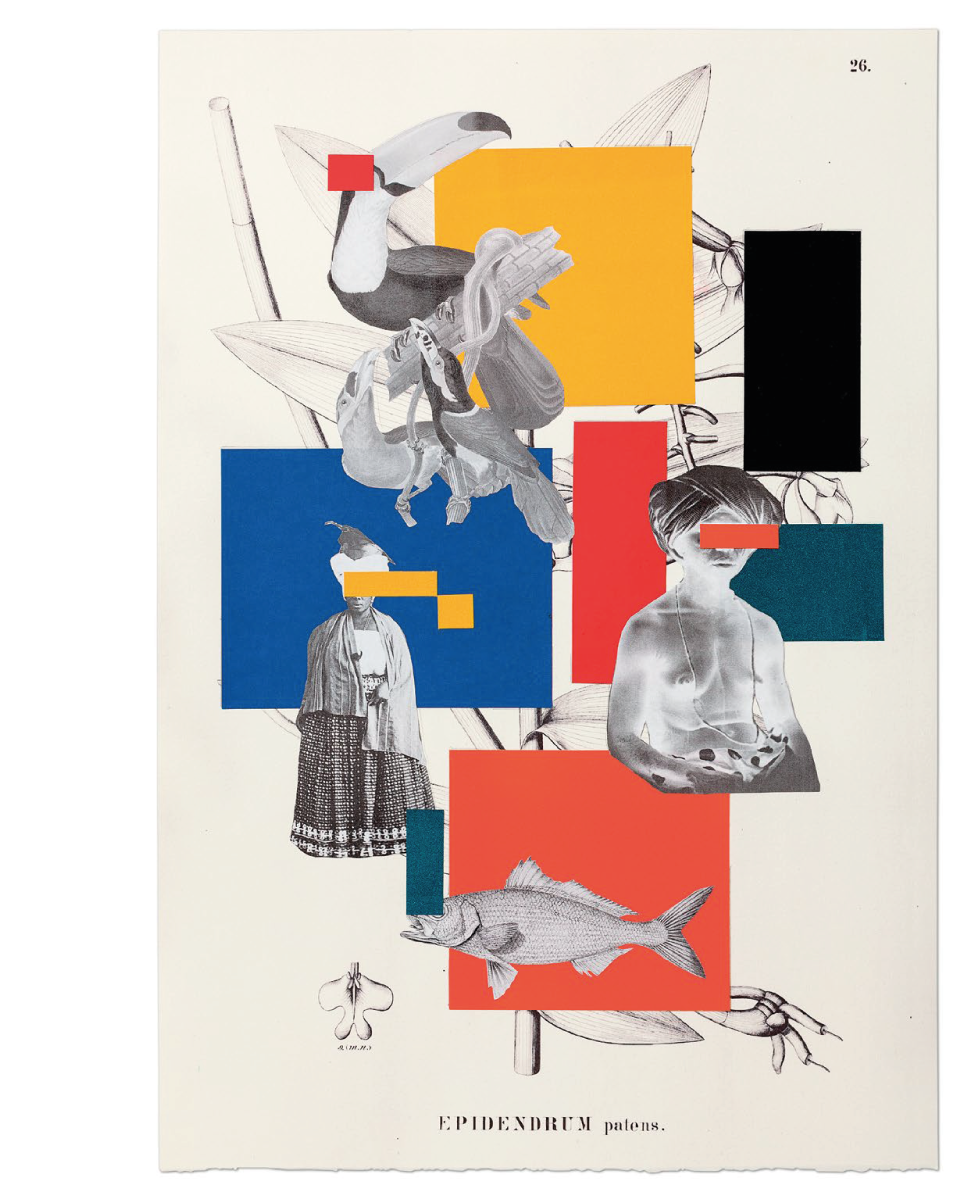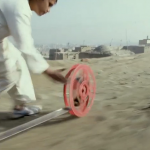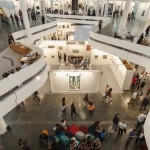Violent geometry
Publicado em: 17 de February de 2021In the second half of the 19th century, photographic studies of Imperial Brazil left us with images which allow us to get to know the faces of children, men, and women who lived under the yoke of slavery. The photographic records of humans of African descent taken at that time have been investigated by a significant number of artists and researchers, among whom stands out the visual artist Rosana Paulino.
The iconography of this historical moment is fundamental if we are to know more about Black Brazilians, although some aspects of the daily lives of the enslaved, caught in these images, come from scenarios set up at photographic studios. This information does not diminish the fascination the images exercise over us, and over Paulino herself, who has applied her own aesthetic to them, revealing new layers of significance and interpretations about these people. Such layers also make reference to the relationship that both Imperial and Republican Brazil cultivated with these people and, consequently, with their descendants.
The photographs recorded their lives in their most diverse contexts, but also brutally violated them. Black people are shown as bodies alone, and their desires, dreams and identities are abducted to create the image of Brazil that satisfied the curiosity for the exotic. This colonial imagination satisfied the visual enjoyment of our elite and spread through the cartes de visite, a kind of souvenir photo created by the French photographer André Adolphe-Eugène Disdéri (1819- 1889) which were exchanged between those who could travel and wished to please their beloved ones with a Brazilian souvenir.
At the same time, photography also served science as a tool to study the Brazil- ian flora, fauna, and the peoples themselves.
From a scientific perspective, the non-white population was considered part of nature, and as such it was to be recorded, cataloged, investigated, and analyzed. There exists a number of anthropometric photographs that depicted men and women in a standardized way – from the rear, in profile, and from the front – as an analytical element supporting comparative genetic and biological studies, intended to prove the supremacy of European white types. Nowadays these pseudo sciences have been already discredited due to their underlying eugenic basis. However, these photographs are still a formidable source of research into ourselves and our complex of a nation, wallowing in brutal violence.
For a long time in the visual arts, we have refused to speak honestly about this Brazil, because addressing it implies that our history is explicitly formed by its roots, both with our constitution as a society and that part of it that falls to our artistic production.
The artist Rosana Paulino, who is from São Paulo, rescues the iconography in her work – not to reflect on the past, but to denounce those ideas from that past that still remain today, and give the due importance to the people who inhabited those bodies. Committed to looking at our history through another lens, Paulino has made works about us, the Brazilian people, considering the process of invasion, encroachment, expropria- tion, genocide, violence, and epistemicide, which is written into our collective DNA.
Addressing our history through a bias that differs from the distorted official version used to be considered agitation in bad taste. In her book Arte para quê? [art for what?] (2003), the critic and historian Aracy Amaral talks about the prejudice in art that deals with the human being through concerns that have to do with history, society and the relationships that we weave within it and from it. The book is also a response to a certain consensus in the Brazilian art criticism of the mid-20th century, which used to say that Latin America had a natural vocation for constructive art (the critic Frederico de Morais discusses the reasons that would justify this belief in his excellent essay “The Constructive Vocation in Latin America”, 1978).
The difficulty in facing our history, including in the visual arts, is rooted in the colonial traumas resulting from the greed involved in Europe’s territorial and economic expansion, according to the artist, writer, and psychologist Grada Kilomba in Memórias da plantação [plantation memories] (2019). For a long time, Brazilian society chose to fake a dissociative amnesia. We have never examined this colonial trauma.
The supposed Latin American preference for geometry could be understood as a kind of sublimation – a defense mechanism that deflects and transforms harmful, detrimental or uncomfortable thoughts into socially acceptable ideas. We can replace “thoughts” by “subjects”; and we identify “harmful, detrimental or uncomfortable” as the actual material and immaterial heritage of the non-white peoples, Africans and indigenous, co-founders of the histories and cultures of Brazil. Plurality, so celebrated in Modernism as a seal of Brazilian authenticity, is that which will be sublimated culturally.
In the visual arts, the creative process is the mediator of possible ways of salvation. Therefore, our alleged geometric tradition is our collective sublimation. If we are not able to deal with the colonial trauma and pretend to forget it, we convert the “forgetfulness” into vocation, into salvation, which would free us from the stain of colonialism and co-exist with the effects of the absence of a truly democratic project for a nation, one which is committed to our diverse population at all levels.
Geometric compositions made from “pure” forms suggest an aseptic art, one which exempts us from having to deal with trauma and pain in the field of the visual arts. Artists should rapidly incorporate the assumptions of geometric art, demonstrating their dexterity in mastering mathematical concepts that aligned themselves in the making of art. This was a type of proof of our capacity to follow the conceptual and aesthetic transformations of European art, reinforcing the feeling of Brazilian artists eternally being one step behind.
Seldom has our artistic production treated the trauma of colonization and its consequences seriously. Adopting European artistic trends as its reference, including subduing the importance of the geometric fundamentals of the arts produced by African and indigenous populations of the Americas, was the sublimation of the colonial trauma in practice. We removed the circularities and triangularities of understandings of themselves and of the world of the African and indigenous populations through the straight line of the history of European art. We removed them to point of making them invisible. However, by being invisible the trauma and pain do not cease to exist. They constantly throb and bleed.
Paulino has led her artistic investigation from the binomial of photography and society (or social relations) since the beginning of her career. The artist started Parede da memória (Wall of Memory) (1994-2015) while still at university, with its photographic images of children, men and women printed on patuás [amulets originating in Candomblé] colored with water paints. The work was first shown in 1994 at the invitation of the art historian Tadeu Chiarelli as part of the exhibition Fotografia contaminada [contaminated photography] at the Centro Cultural São Paulo. In 1997, Paulino exhibited Bastidores (Embroidery Hoops), a series of images of black women joined by a sewn black thread, in the traditional cycle of exhibitions Panorama of Brazilian Art at the Museu de Arte Moderna de São Paulo (MAM-SP).
In both works, which are emblematic of her career of over twenty-five years, the photograph already appeared as a mark of the artist’s poetic investigation. These works also deal with the race debate, departing from the use of photographs of her family circle – a debate which is only now being approached with the seriousness it merits in the field of visual arts.
In this sense, when she rescues our sublimated history – that which could not be spoken about due to an inferiority complex –, Paulino can be considered an embreante (embryonic), as it is defined by the philosopher Anne Cauquelin. For Cauquelin, contemporary art is founded in communication, and the ruptures in the production, exhibition, marketing and understanding of western art in the 20th century are due to the determinant actions of figures which she called embreantes. They are the ones who, by challenging the system of art, substantially modify its structure, which thereby incorporate new realities, discussions, aesthetics, and behaviors.
Paulino is an embreante who announces the discussion about Brazilian history sullied by what it does not talk about on the topic of race; she makes a clinical examination of this issue in visual arts from an incorruptible criticism of the history, and, especially, the historical narrative about African people and their descendants in Brazil. In a short text it is not possible to mention a hundred or so Brazilian artists, especially those who are Black, who nowadays pursue this theme and similar ones with greater ease and freedom than three decades ago. Paulino is key to this opening up, to paraphrase the poet and rapper Rincon Sapiência (“the Black is key/ Open the gates”).
Paulino is key to trying out possible cures for this colonial trauma, from the use of photographs from her family collection to the appropriation of historical-scientific images that objectify Black people in souvenirs or experimental studies. In the work Ama de leite (Wet Nurse) (2007-2009), one of her first works to use historical photographs, she shows an image by Jorge Henrique Papf, 1899, in which a woman on all fours carries a child on her back. Mind you, the image was taken eleven years after the Áurea Law [the 1888 law which finally abolished slavery in Brazil] was passed.
The interest in the photographic image is added to the fascination that the artist shows for biology, an area that she thought about taking up professionally. This fascination is visible in a large part of her work, such as in the many series of drawings in which her knowledge of human and animal anatomy is materialized in hybrid beings. For example, the life cycles and the metamorphoses of insects are used as metaphors for our own personal transformations in the series Carapaça de proteção (Carapace of Protection) (2004), in which the women depicted sometimes appear protected by translucent enclosures.
But, above all, it is in Assentamento (Settlement) (2012) that the photographs of a historical-scientific nature become the protagonists of the artist’s work. In this installation, Paulino restores humanity to the woman photographed by Augusto Stahl in 1865. By means of a surgical thread, the artist reconstructs the fragments of this woman, rejoining her parts without hiding the scars. And she humanizes her: the artist exposes her heart; reveals the baby that she could bring into the world in her bulging belly; and alludes to the foundation, which are this woman’s feet transmuted into roots, penetrating the earth, regaining her ancestry, as an iroko tree that crosses the time in which we resist and of which we are the continuity-fruit.
As filhas de Eva (The Daughters of Eve) (2014), ¿História natural? (Natural History?) (2016), Paraíso tropical (Tropical Paradise) (2017), Geometria à brasileira (Brazilian Geometry) and Geometria à brasileira chega ao paraíso tropical (Brazilian Geometry Arrives at the Tropical Paradise) (2018) are works in which the presence of photographs of human types remains, overlayed by the illustrations of the Brazilian flora and fauna made by naturalists. This set of works is definitive in demonstrating the depth and breadth of the photographic elements in Paulino’s artistic practice, poetics, and discourse.
In Tropical Paradise, the photographed enslaved women have no face; their faces, the mark of their identities, are removed. These women appear in illustrations of skulls which relate to the pseudo sciences, anthropometry and phrenology, which strived to determine the inherent mental and behavioral abilities of each human “race”. The compositions speak critically to the 19th century Brazil, a country which, in the eyes of Europe, was a strange tropical paradise to be deciphered from exhaustive and fanciful speculations about its peoples, its vegetation, animals and nature – seen as possible obstacles to the realization of the civilization that they dreamed of establishing.
Brazilian Geometry was produced in the USA during an internship Paulino served at Colgate University, in 2018. Brazilian Geometry Arrives at the Tropical Paradise continues that research, now back in Brazil. Apart from technical issues – in the USA it was possible to count on very large pieces of paper, unavailable in Brazil, where the work gains a smaller scale – the two series complement each other and expand on the issues previously discussed.
In the first, the fauna and flora are the same size as the other human figures, while in the second, the plants-orchids get a bigger proportion and are centralized in the background of the other elements of the composition. The extensive family of orchids, which so charmed European naturalists for its variety, is identified by their scientific names: Epidendrum ammophilum, Cattleya elongata, Oncidium, and so on. The taxonomic classification of the family of flowers here gets closer to the social concept of family for the peoples of West Africa, from where most part of the enslaved persons in Brazil were abducted. The two large families, of Brazilian plants and the African people, serve as a metaphor of resistance and survival: resistance, because they do not surrender to the process of colonization, which includes taming the vegetation to urbanize the cities (plants, for example, are flourishing in the cracks of the concrete, “it is nature that does not surrender,” observed Rosana Paulino); survival, because, despite the colonial trauma, we have resisted the exclusionary and genocidal project of civilization that tries to extinguish us.
And geometry, in both series, makes itself present through rectangles and squares in dark green, cobalt blue, yellow-gold, live red, brown skin color and orange sunlight colors. These color adjectives are not in the Pantone scale but, yes, in Brasilis (we can even change the live red for blood red, very present in our watercolors).
As well as the Brazilian geometric art of the last century, which is juxtaposed to other artistic languages, blinding us to different productions, themes and aesthetics, in the two series by Paulino the geometry also blinds us: the squares and rectangles cover the eyes of the black and indigenous people represented in the works. The geometry is precisely the element in the composition that makes it impossible for people to see – and to receive our gaze in return, recognizing them as subjects. The geometry excludes them, and makes them see the world, see themselves, see their beloved ones from a unilateral historical perspective, from a single mode of being, to be and exist.
The word geometry comes from Greek and means, at its simplest, “measurement of the earth.” Perhaps geometry is indeed in our future, but from an organic form: from the earth, nature and its perfectly calculated spirals, fractals, and hexagons; from the re-signification of that which was sublimated. Geometry is present in the knowledge of the populations that, in spite of their being laboriously examined, were considered unfit for the Brazil project because the same ruler, compass and protractor do not meet the projects of existence of all peoples. As Paulino pointed out at the end of our conversation, it is the riverside, the indigenous, the quilombolas [inhabitants of rural communities founded by the descendants of slaves] and the outskirts populations that can reinvent the course of the civilizing project so that it is our project, with the whole world. Let’s hope this Brazilian geometry is our future. ///
CAPTION p. 70: Geometria à brasileira (Brazilian Geometry) and Geometria à brasileira chega ao paraíso tropical (Brazilian Geometry Arrives at the Tropical Paradise) series (2018-2020).
ROSANA PAULINO (São Paulo, 1967) holds a PhD inVisual Arts from ECA-USP (School of Communications and Arts, University of São Paulo) and is a specialist in printmaking from the London Print Studio. Her works are part of the collection of MAM-SP (Museum of Modern Art), University of New Mexico (USA) and Afro-Brasil Museum (SP). Recent exhibitions include: Rosana Paulino – A costura da memória (The Sewing of Memory), at Pinacoteca do Estado de São Paulo, and Histórias afro-atlânticas (Afro-Atlantic Histories), at MASP and Instituto Tomie Ohtake, in São Paulo, in 2018.
RENATA FELINTO (São Paulo, 1978) holds a doctorate and a master’s degree inVisual Arts from the Institute of Arts at Unesp (São Paulo State University) and is a specialist in curatorship at MAC-USP (Museum of Contemporary Art-University of São Paulo). Visual artist and adjunct professor at URCA-CE (Regional University of Cariri, Ceará), she participated in the exhibition Histórias afro-atlânticas (Afro-Atlantic Histories) (2018), at the Instituto Tomie Ohtake/MASP, among others.
+ Rosana Paulino: a costura da memória (The Sewing of Memory) (2018), catalog of the exhibition at the Pinacoteca do Estado de São Paulo.
Tags: decolonização, Fotocolagem, Gravura

